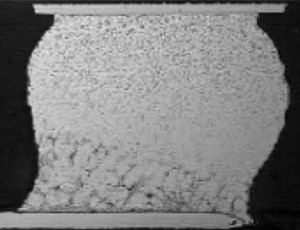Not really. There is no 'board type' specific for a type of solder. The base material of the pcb is usually copper, just plated with some type of solder. Often lead-free for industrially produced units.
But this is not a permanent thing. If you replace a component on a lead-free board you can still use lead based solder perfectly well. The best approach is to flow some lead based solder onto the exiting pads, let it mix with the lead-free stuff and then remove it (using a suction system, litze, or just whacking the board on its edge as you prefer).
After doing that, lead based solder will flow perfectly well onto the now mostly clean pads and component leads to be connected.
In most cases you can visually tell if a solder joint is good: it should be shinly all over the surface, and have a shape like the solder just wicked into place.
Some factory soldered cheap electronics lack these qualities, and you should be careful when using them. Lead free solder can also make joints that look good, provided that the manufacturer used the proper temperature profile and all.
Bodges done by hand with lead free solder usually are crap, and if they involve bodge wires you can often just rip them off the board - something almost impossible to do with a well soldered copper wire onto a board... in which case you'll break the wire or rip the trace off the board, but not break the solder bond.






